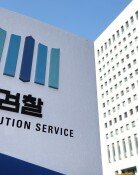Around 93 Percent Think There Is Serious Gap Between Rich and Poor
Around 93 Percent Think There Is Serious Gap Between Rich and Poor
Posted February. 16, 2005 22:53,
It was surveyed that out of ten citizens, nine say there is a great gap between the rich and the poor.
The Korea Institute for Health and Social Affairs announced their survey results on citizen awareness on growth and distribution that was conducted on 3,000 adults nationwide between October 28 and November 10 last year. It is the first time government-level citizen-awareness research related to growth and distribution has been carried out.
A total of 93 percent thought that the gap between the rich and the poor was a serious problem, with 63.5 percent answering, The gap is very serious, and 29.5 percent answering, The difference is a bit serious. These results were shown universally in low-income groups (those with a monthly income of two million won and less) and high-income groups (those with a monthly income of three million won and more).
On the other hand, only 6.1 percent answered, The difference is normal, and mere 0.9 percent answered, The difference is not serious.
On the whole, each households income decreased. Especially, the less income each household received, poorer they got. A total of 55 percent answered that they got poorer compared to one or two years ago, and only 6.4 percent answered that they are better off.
As if reflecting this situation, to the question asking what government policy is needed the most, the most preferred answer was extending supporting programs and social welfare services for the poor, with 33.4 percent responding positively. Following this, 32.4 percent answered, Loosen company regulations.
More that half of the people surveyed preferred economic growth as a solution for poverty. A total of 54.6 percent replied that the poverty problem can be solved through economic growth.
Most of those polled showed a sceptical reaction to distribution-oriented policies. To the question, Is it possible to reach 20,000 dollar per capita GDP with a distribution- oriented policy, 73.8 percent answered, It will be hard or will be reached much later on. Only 24.6 percent answered in the positive.
However, to the question asking about future policy direction opinions, there was a different result. The opinion that growth and distribution policy should be carried out simultaneously took first place with 36.4 percent, but 33.7 percent answered, Distribution oriented policy should be carried out first. A total of 29.7 percent replied that growth oriented policy should be carried out first.
Furthermore, to the question of what effect income redistribution will have on economic growth, 65.6 percent answered, little or totally.
To this, KIHSAs Won Jong-ook said, With long-term economic stagnation, the citizens double mind of wanting both growth and distribution is shown clearly.
Sang-Hoon Kim corekim@donga.com




![“한동훈, 정치생명 걸고 무소속 출마해 평가받는 것 고려할만”[정치를 부탁해]](https://dimg.donga.com/c/138/175/90/1/wps/NEWS/IMAGE/2026/01/19/133186982.1.jpg)


